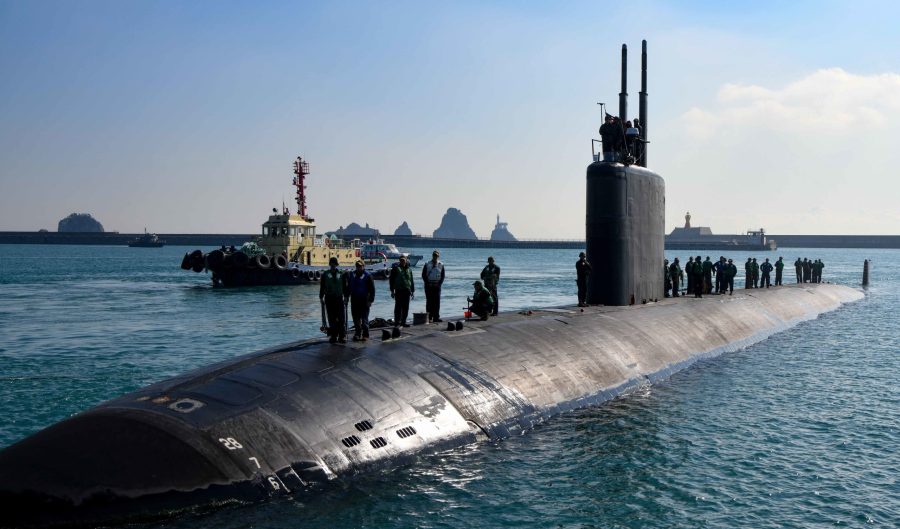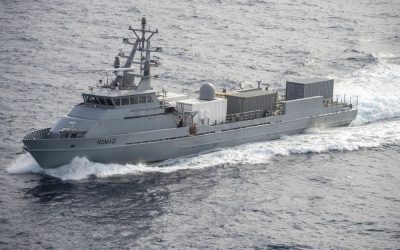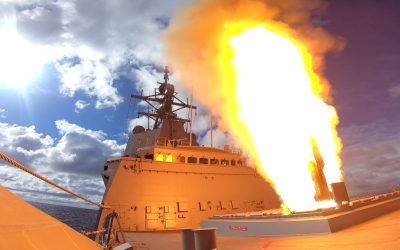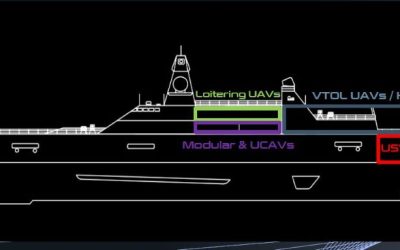By David Foxwell
Two analyses of unrelated recent events could suggest a great deal about the way naval technology is evolving, and about how it is evolving a country that presents a potential threat to regional and Western forces.
In the first, Ukraine used uncrewed surface vessels (USVs) and unmanned aerial vehicles (UAVs) to inflict damage on the Russian Navy. The audacious raid on the Russian Black Sea Fleet using a combination of UAVs and USVs took place in late 2022. Using USVs in this way attracted significant attention, with some heralding the attack as the portent of a new era. However, as Dr Sidharth Kaushal, a research fellow at the Royal United Services Institute (RUSI) noted, the true significance of the attack is unclear, and the use of autonomous capabilities needs to be set within a wider context. As Dr Kaushal noted, some analysts have suggested that the unmanned units used by Ukraine could presage a wider shift in the conduct of war at sea. The USVs used by Ukrainian forces were relatively primitive, although equipped with electro-optical and infrared sensors and Starlink antennae. They were, he said: “relatively simple uncrewed capability, powered in part by commercial off-the-shelf technology.” “Moving forward,” he suggested, “uncrewed swarming capabilities could become more sophisticated… although there are grounds for caution regarding claims that a given technology has revolutionised warfare.” As he also noted, there are already potential countermeasures to USVs and other uncrewed units.
“USVs may prove highly lethal against certain types of targets,” he suggested, such as those in port or operating at a maritime chokepoint. Similarly, they will probably have the advantage of surprise when they can hide in the midst of maritime traffic. However, in many other instances, alert surface vessels should be well-equipped to deal with swarms. “This is not to say that uncrewed assets will not have a substantial impact on the battlefield – merely that this impact will reinforce dynamics that are driven by a range of tools,” he said, noting that the transformative impact of uncrewed assets is likely to be uneven. “Ultimately, uncrewed capabilities represent one vector among many in which navies are generating cheap mass,” he concluded.
Joseph Dempsey, a Research Associate at for Defence and Military Analysis at the International Institute for Strategic Studies (IISS), highlighted the second potentially important technical advance, North Korea’s recent launch of what appeared to be a submarine-launched cruise missile (SLCM), which Pyongyang claims has a range of more than 1,500km.
State media reported two cruise missiles were launched from a submarine on 12 March 2023, with both hitting pre-determined target areas in the sea. “While not made explicit, the SLCM is also most likely a land-attack weapon,” said Dempsey, although he did not rule out an intended nuclear role” North Korean state media has referred to the missile as a ‘strategic cruise missile. But although a submarine is shown surfaced in one image of the launch, Dempsey said it is unconfirmed if it served as the launch platform, as Pyongyang stated. And North Korea has form – it has previously released misleading imagery of submarine launched ballistic missile (SLBM) tests.
“If the SLCM was launched from a submarine – or is intended to be – it remains to be seen whether this will use a standard 533mm torpedo tube either for direct launch or with the SLCM rising to the surface in a capsule for launch,” Dempsey explained, noting that the capacity to deploy nuclear weapons aboard submarines provides a pre-emptive and retaliatory capability, given the inherent challenges of identifying, tracking and prosecuting a submerged platform. “However, this is in no small part dependent on the submarine being able to remain undetected for a prolonged period, a trait typically associated with nuclear propulsion,” he noted. “Nuclear-powered submarines can remain submerged for several months if required. Air-independent propulsion can extend a conventionally powered submarine’s submerged endurance, but compared to nuclear power it has its limits, including submerged speed and manoeuvrability. North Korea has ambitions to develop a nuclear-powered submarine, it could be decades before such lofty goals can be met.
“The SLCM programme could provide Pyongyang with a quicker or more accessible route to a sea-based nuclear capability than the SLBM option, or the two could be complementary in the longer term,” Dempsey concluded. “It may also have a conventional role. What is clear is that, after decades where the focus was almost exclusively on ballistic missiles, Pyongyang is now pursuing a variety of land-attack cruise options, with some appearing to be almost ready for service.”






